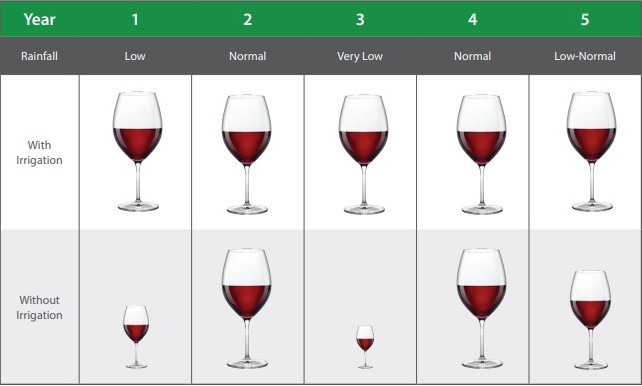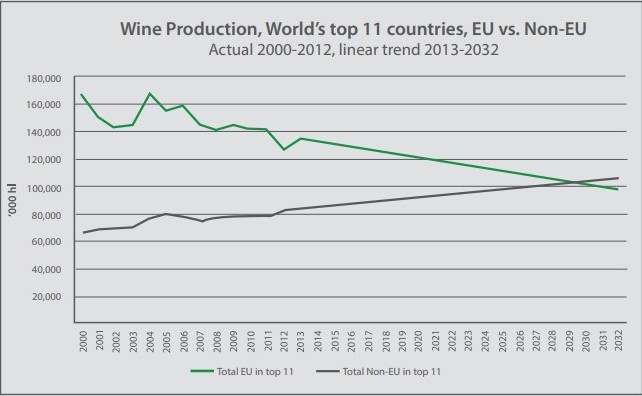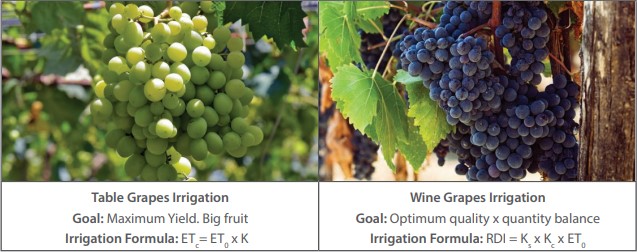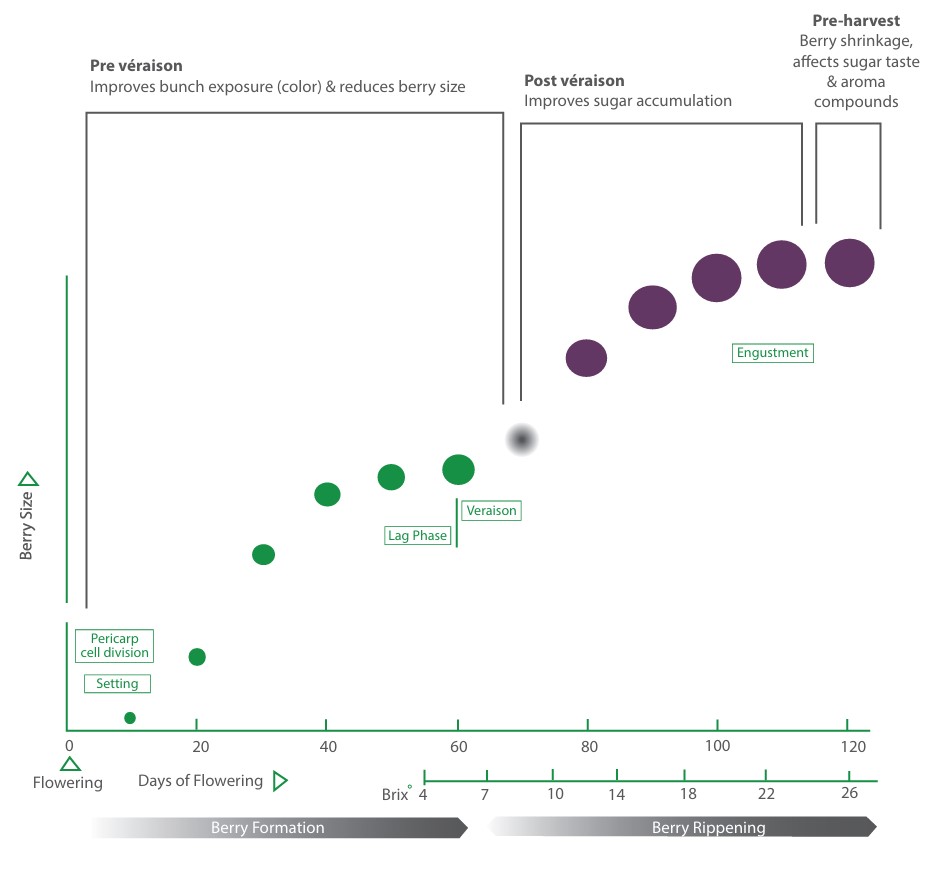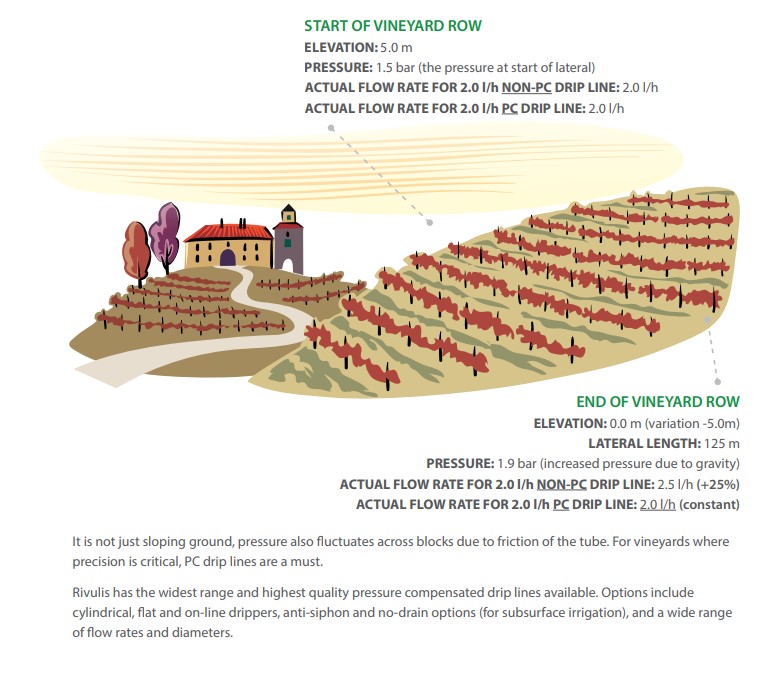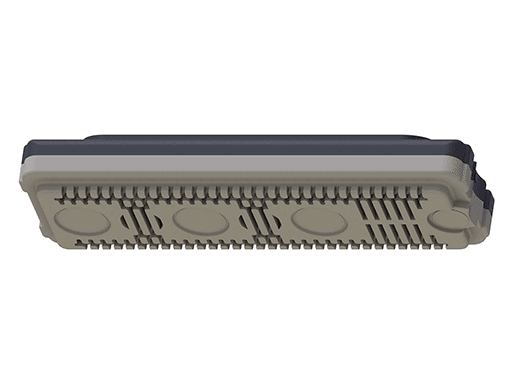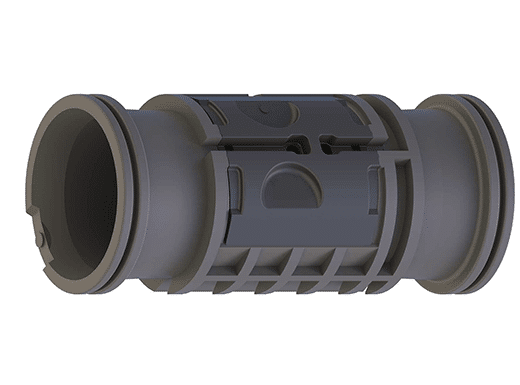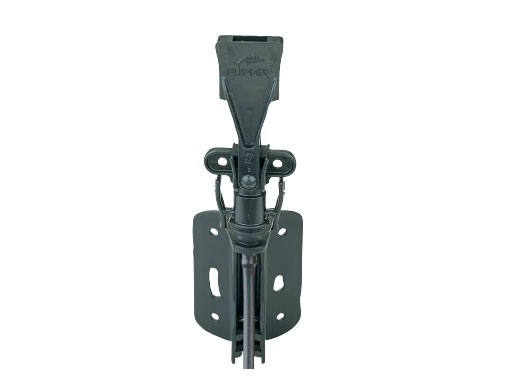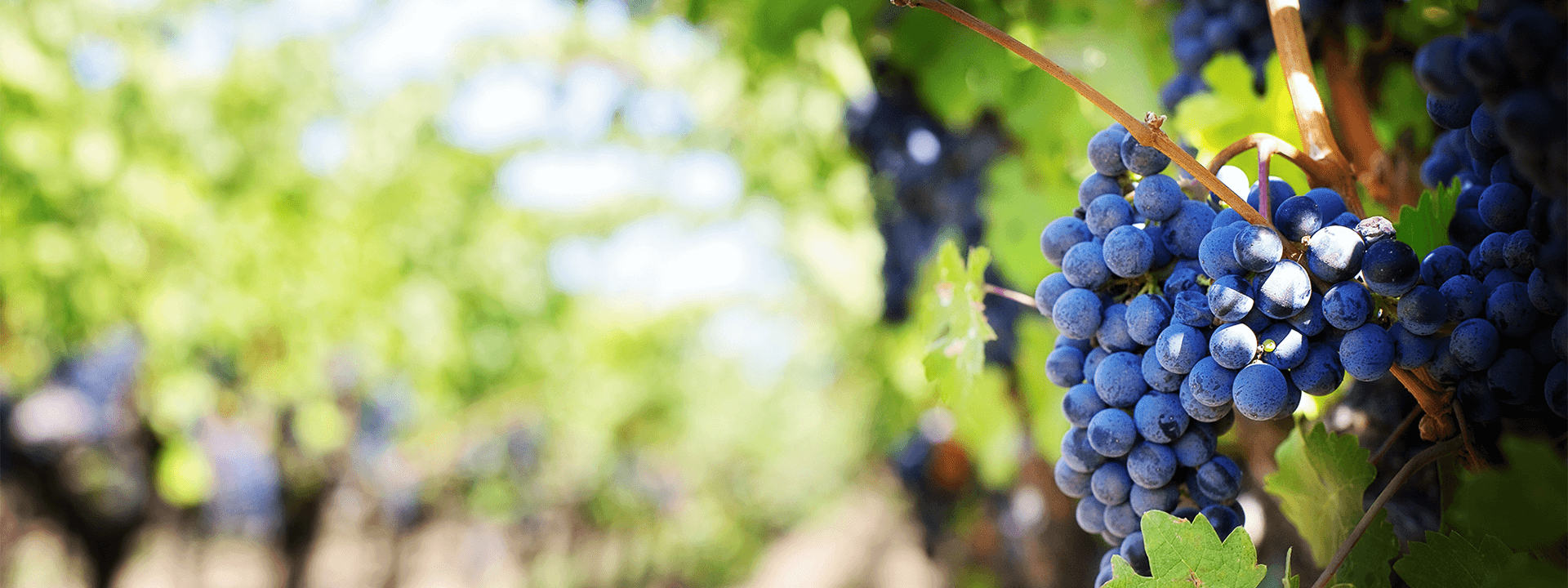

Precision Irrigation for Wine Grapes: Maximize Vineyard Yields and Quality
Vineyards can be as complicated as they are as old as time.
Rivulis understands better than any micro-irrigation solutions provider the meticulous steps to getting your grape produce looking and tasting the way it should.
Irrigating grapes for vineyards with precision requires time, patience, and knowledge of a process that starts with the correct irrigation system design for vines. A farm’s future success hinges on doing this right to ensure a bountiful harvest.
Growing grapes can be challenging, and to be profitable, a business strategy is required to minimize the risk of poor seasons for lower-quality grapes where profit margins are already thin.
What are the most commonly used irrigation methods for vineyards?
Most regions aim to increase wine quality in a repeatable (and reputable) process every season. Various other irrigation methods for grape and vineyard production beside drip include furrow, sprinkler, and flood systems. Each has inefficiencies and drawbacks, such as water wastage and uneven distribution.
Wine grape quality improvement can be achieved through Reduced Deficit Irrigation (RDI) techniques via drip irrigation, which is the most efficient (and popular) choice due to its precision. By delivering water directly to the plant’s root zone in controlled amounts, it:
- minimizes evaporation and runoff,
- reduces weed growth,
- ensures optimal soil moisture.
The combination of these factors results in healthier vines and higher grape yields. This method conserves water and promises quality with firm and plump grapes with freshness and flavor.
Here’s a comparison table highlighting the common irrigation methods for vineyards, along with their advantages and disadvantages:
| Irrigation Method | Advantages | Disadvantages |
|---|---|---|
| Drip Irrigation | -Precise water and fertilizers delivery directly to the root zone. | -Initial installation can be expensive. |
| -Reduces water wastage and evaporation. | -Clogging of emitters if not properly maintained. | |
| -Helps prevent/reduce diseases by keeping the foliage dry. | -Requires regular monitoring and maintenance. | |
| Flood (Furrow) Irrigation | -Simple and low-cost installation. | -High water consumption and wastage. |
| -Low maintenance compared to other systems. | -Not suitable for hilly terrains. | |
| -Can lead to soil erosion and nutrient leaching. | ||
| -Very low precision and uniformity | ||
| Subsurface Drip Irrigation | -Water and fertilizers is delivered directly to the root zones below the surface, reducing evaporation. | -Installation is complex and costly. |
| -Minimizes weed growth and surface runoff. | -Difficult to detect and repair leaks or clogs. | |
| -Highly efficient in water use. | -Not suitable for rocky or uneven terrain. |
The Importance of Proper Irrigation for Vineyards
Irrigation Increases Grape Quality
Micro irrigation supports balanced vine growth and can prevent stress-related issues such as poor fruit development and uneven ripening. Well-managed irrigation systems improve grape quality by allowing precise control over water levels. This helps regulate vine vigor and concentrate the sugars and flavors in the fruit. Excessive or poorly managed irrigation can make plants and fruits more vulnerable to pests and diseases, adversely affecting both current and future production in terms of quantity and quality.. Still, with careful planning and monitoring, irrigation can enhance grape quality and vineyard productivity.
As shown in the table below, there is a significant difference in the grape price based on grape quality.
| Quality | Grape Price (AUD) | Domestic Retail Price (AUD) | Export FOB Price (AUD) |
|---|---|---|---|
| A | >$2,000/ton | >$30/bottle | >$10/litre |
| B | $1,501 – 1,999/ton | $15 – 30/bottle | $7.50 – 9.99/litre |
| C | $601 – 1,500/ton | $10 – 15/bottle | $5.00 – 7.49/litre |
| D | $301 – 600/ton | $7 – 10/bottle | $2.50 – 4.99/litre |
| E/F | <$300/ton | <$7/bottle | <$2.50/litre |
In a report compiled for the Winemakers Federation of Australia, it was found that:
- Vineyards producing A & B quality groups are profitable on average
47% of vineyards producing C-quality grapes are unprofitable - 84% of vineyards producing D-quality grapes are unprofitable
- 70% of vineyards producing E/F quality grapes are unprofitable
Irrigation Reduces Your Dependence on Weather
Viticulture is extremely sensitive to changes in temperature and rainfall.
In many traditional wine-growing regions, temperatures are increasing while rainfall is decreasing. Research has found that precipitation is becoming more variable and lower in summer, with further droughts expected.
One year of high-water stress may adversely impact several years of future harvest. Too much water stress at critical plant phenological stages may result in a decline of the oenological potential of grapes – less sugar in the grapes resulting in a reduction in aromas, acidity, and color stability. If soil moisture from winter and spring rains is depleted and no supplementary irrigation is available, you increase the risk of lowering quality wine.
If you do not irrigate, you leave your grape crop to chance, as the weather worldwide is generally becoming less favorable and more unpredictable. The result is inconsistent yields each year as you rely on climatic conditions.
Irrigation Gives You Greater Control of Nutrients
Drip fertigation integrates fertilizer with vineyard irrigation, allowing precise nutrient delivery directly to grapevines’ roots. This method ensures a balanced and timely nutrient supply.
For instance, it can boost nitrogen for early growth and increase potassium for improved fruit flavor and size and sugar content. Additionally, drip fertigation minimizes nutrient runoff and soil salinity.
Here are a few examples of how drip irrigation can provide greater control of your grape production:
Easy and accurate application of nitrogen, potassium, phosphorus, calcium, and other microelements. As these elements are critical drivers for your crop, any variation will impact the crop significantly. Drip irrigation makes it easy to develop and implement a fertigation protocol based on the grape you want to achieve. With the ability to create different irrigation zones, subtle differences in fertigation prescription can be applied to each block (and even areas of blocks) based on different varieties, soil, and other factors.
Old World vs New World Production: Irrigation is the Key to Staying Competitive
Europe (‘Old Word’ Production) represents 76% of the wine grape area in production. However, only 10% of vineyards are irrigated. Irrigation adoption is increasing rapidly to remain competitive globally, and due to climate change, Outside Europe (‘New World’ Production) is multiplying.
It brings increased competition to the vineyard market that is over 90% irrigated and is forecast to overtake ‘Old World” production volume by 2030.
Vineyard Irrigation Best Practices
Regulated Deficit Irrigation (RDI)
Regulated Deficit Irrigation (RDI) is an irrigation strategy that involves intentionally applying less water than the full crop water requirement during specific growth stages of a plant. In vineyards, for example, RDI is often used to control vine vigor and improve the quality of grapes by limiting water during non-critical growth periods, such as after fruit set, but providing sufficient water during critical periods, like berry ripening.
By strategically stressing the vines, RDI can enhance fruit concentration, sugar levels, and flavor profiles, making it a valuable technique for improving wine grape quality while conserving water.
Vineyards require at certain phenological stages moderate level of water deficit. The goal is to maintain vegetative growth and good sugar accumulation.
To demonstrate another example of the impact of RDI, the photos below show the significant difference in fields irrigated with and without RDI protocol.
Your RDI method Changes Throughout the Growing Season
The graph below illustrates the various fruit phenological stages where the RDI system can significantly influence the final outcomes. With RDI, you can precisely optimize your crop using drip irrigation.
Ensure Uniformity Across the Field
Just as important is uniformity across the field. You want to avoid uneven water and fertilizer applications where some vines receive too much treatment and others receive too little. For a high-quality harvest, you need a uniform application for all vines. This is achieved through Pressure Compensating (PC) Drip Lines.
PC Drip Lines contain drippers that each have a flow-regulating membrane. This membrane compensates for changes in pressure across the line so that every dripper emits the prescribed water flow per hour. As the diagram below shows, over a slope of five meters, the pressure increases by 26% toward the bottom of the hill. Without a PC drip line, the result would be that vines at the lower end of the slope would receive 25% more water and nutrients than those at the highest elevation. With PC drip lines, all vines receive the exact water regardless of the pressure.
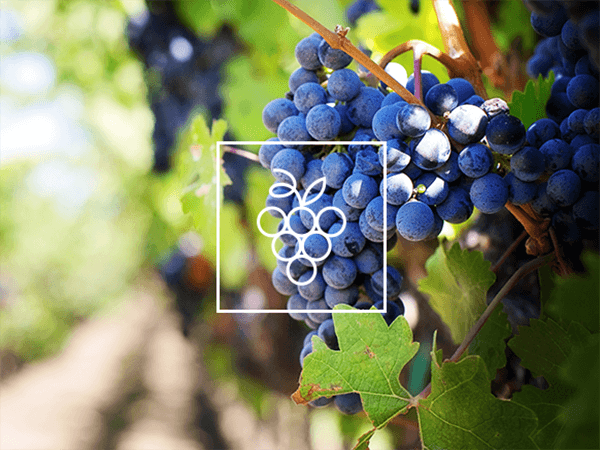
Recommended Drip Irrigation Systems for Vineyards
It is not just sloping ground; pressure also fluctuates across blocks due to tube friction. For vineyards where precision is critical, PC drip lines are a must. Rivulis has the most comprehensive range and highest quality pressure-compensated drip lines available. Options include cylindrical, flat, and on-line drippers, anti-siphon and no-drain options (for subsurface irrigation), and a wide range of flow rates plus diameters.
Drip Line Suspended on Wire
Drip lines suspended on the wire are an efficient irrigation setup with flexible drip tubing elevated above the vine rows, typically supported by wires strung between posts. This arrangement ensures even water distribution while keeping the drip lines clear of soil and foliage, reducing the risk of clogging and allowing for precise watering. Maintaining an optimal height prevents interference with vineyard operations and minimizes water waste.
- RIVULIS HYDRO PC/PCND DRIP LINE
https://www.rivulis.com/product/products/hydro-pc-pcnd-drip-line/
Drip Line on Surface
Surface drip lines are laid directly on the soil between vine rows, delivering water directly to the base of the plants. This method allows for straightforward installation and maintenance, ensuring consistent and targeted water application. Although surface lines can be more prone to physical damage and may require periodic adjustment to avoid interference with vineyard operations, they still effectively support grapevine health.
Drip Line Buried Subsurface
- Subsurface drip lines are installed below the soil surface. This method reduces water evaporation and surface weed growth while providing consistent moisture where needed. It minimizes interference with vineyard operations and protects the system from physical damage, thus ensuring efficient water use.
- Advantages and disadvantages of drip lines buried sub-surface in Vineyard irrigation
- D5000 PC/AS/ND Drip Line
https://www.rivulis.com/product/products/d5000-pc/

Vineyard Irrigation Solutions from Rivulis
Frequently Asked Questions about Vineyard Crops
The most efficient irrigation system for vineyards is drip irrigation. It delivers water directly to the plant’s root zone, minimizing water waste and evaporation. Drip irrigation ensures consistent moisture, reduces weed growth, and enhances grape quality and yield, making it the preferred choice for modern, sustainable vineyard management.
For drip irrigation systems suspended on wire, the drip lines are typically mounted 45 to 60 cm (18 to 24 inches) above the ground to ensure even water distribution and avoid interference with vineyard operations. Surface drip lines are laid directly on the soil, so their height is essentially at ground level. Subsurface drip lines are buried below the soil surface, so their height is irrelevant.
To increase vineyard yield, use efficient drip irrigation, apply targeted fertigation, regularly prune and train vines, manage pests and diseases, maintain soil health with the correct nutrients, and select grape varieties suited to your climate.

Any information provided herein, including any case study referrals are for information purposes only and actual results may vary.
Whilst every effort has been made to ensure all data is accurate, the accuracy of all data cannot be guaranteed and it is advised that you to consult with an irrigation specialist for your specific needs and to carefully review technical specifications for proper use.
As some products are not available in all regions, please contact your local authorized dealer for additional details.
TABLE OF CONTENTS
- What are the most used irrigation systems for vineyards?
- The Importance of Proper Irrigation for Vineyards
- Old World vs New World Production: Irrigation is the Key to Staying Competitive
- Vineyard Irrigation Best Practices
- Recommended Drip Irrigation Systems for Vineyards
- Vineyard Irrigation Solutions from Rivulis
- Frequently Asked Questions about Vineyard Crops


